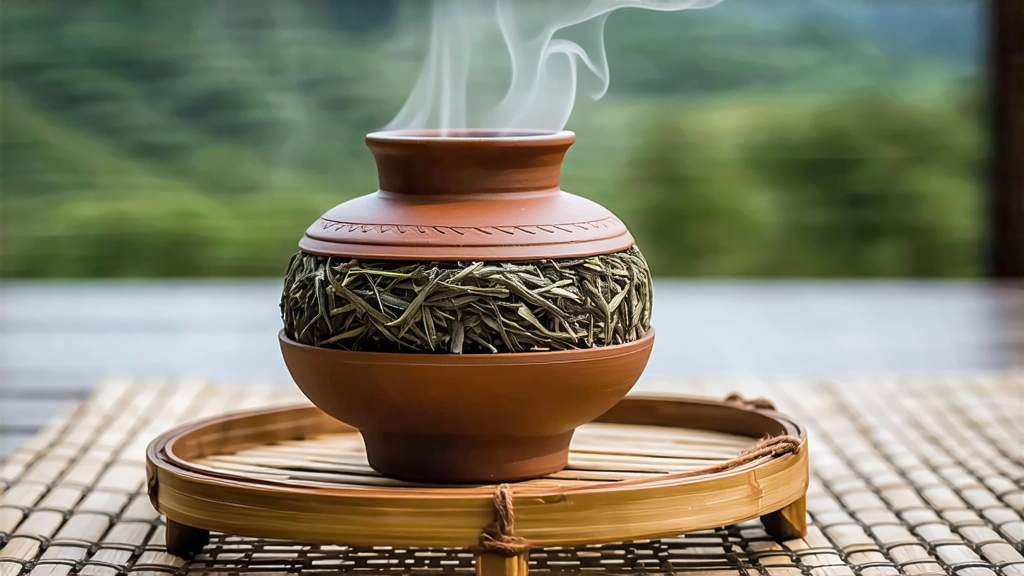
Tucked away in the humid, karst-studded southern fringe of China, the small town of Liubao in Wuzhou, Guangxi, quietly guards a tea secret that once traveled the Ancient Tea Horse Road and perfumed the holds of nineteenth-century clipper ships bound for Southeast Asia. Liu Bao Hei Cha—literally “Six-Fortress Dark Tea”—is the oldest commercially produced dark tea in China, predating the better-known Pu-erh by at least two centuries. To international drinkers who equate “black tea” with Ceylon or Assam, Liu Bao offers a radically different lexicon of flavor: forest floor after rain, betel nut, dried longan, and a cooling camphor finish that lingers like a breeze through cinnamon trees. This article invites you to explore Liu Bao’s layered history, its unique wet-piling micro-biome, the meticulous craft that turns fresh leaf into a living time-capsule, and the graceful choreography of brewing it in a way that releases decades of mountain memory into your cup.
Historical footprints
The earliest written record appears in the 1567 edition of the Wuzhou Gazetteer, noting that “Liubao tea, compressed in bamboo baskets, cures dampness and relieves fever among boatmen.” By the Qing dynasty (1644-1912), Liu Bao had become a strategic commodity. The Qing court bartered it with northern nomads for warhorses, while Cantonese merchants used it as ballast in ships sailing to Malacca and Jakarta. The tea’s ability to suppress mold and improve with age made it ideal for tropical warehouses, where Malaysian tin-mine workers later discovered that drinking Liu Bao eased joint pain caused by humid conditions. In 2008, Liu Bao was granted National Geographic Indication status, and today boutique collectors from Kuala Lumpur to Berlin chase pre-1990s vintages the way oenophiles hunt Bordeaux.
From leaf to dark gold: the craft
Liu Bao belongs to the “hou fā xiāo” (post-fermentation) family. Unlike shou Pu-erh, which borrowed its wet-piling technique from Liu Bao in the 1970s, the Guangxi method relies on a shorter, cooler, and more microbially diverse pile. The journey begins in early May, when the Yunnan large-leaf varietal (Camellia sinensis var. assamica) grown around Liubao reaches a three-and-a-half leaf standard. After plucking, the leaves wither under gentle mountain fog for four to six hours, reducing moisture to 65 %. A 300 °C wok firing lasting ninety seconds deactivates enzymes but preserves leaf integrity. Rolling follows, tighter than green tea yet looser than oolong, to create micro-fractures for future microbial colonization.
The pivotal act is “wò duī” (wet-piling). Leaves are sprayed with misty Liubao spring water—naturally softened by karst filtration—then stacked 70 cm high on bamboo mats. The pile is covered with jute sacks and left undisturbed for 18–22 days, its core temperature kept below 55 °C by twice-daily turning. Indigenous fungi such as Aspergillus niger, Blastobotrys adeninivorans, and a rare yeast Kodamaea ohmeri bloom in succession, metabolizing polyphenols into theaflavins and novel imidazole alkaloids that give Liu Bao its trademark betel-nut sweetness. When the pile emits a ripe lychee aroma and leaves turn chestnut-brown, the tea is sun-dried on raised bamboo racks for three consecutive days, achieving 10 % moisture. Finally, the loose mao cha is steamed, compressed into 40 kg bamboo baskets lined with wild banana leaf, and transferred to mountain caves or climate-controlled warehouses where it will slumber for a minimum of three years before release.
Grades & vintages
Liu Bao is classified by leaf grade (Superfine, First, Second, Third) and by storage era. “Qing cang” (green storage, <70 % RH) yields a brisk, woody cup with hints of pine smoke. “Shi cang” (wet storage, 80–85 % RH) accelerates microbial activity, producing deeper camphor and jujube notes. A 1980s “Song ban” (pine-board basket) recently fetched USD 12,000 at auction, its liquor the color of black cherry and the texture of light soy sauce. For newcomers, a